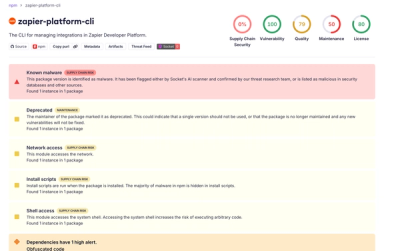Data Catalog React
This project was bootstrapped with Create React App.
This is a REACT frontend designed to utilize the latest stable version of DKAN 2.x as a backend.
This application serves as a starter app, or example of how to use the data-catalog-components library to easily create open data catalogs.
Auto Set Up
- Follow the DKAN Tools README to stand up the backend. Include the
--demo flag to have the frontend installed and example pages built as well.
Manual Set Up
If you have a backend already running and just need the frontend:
- Clone this repository in your docroot
git clone https://github.com/GetDKAN/data-catalog-react.git frontend. The DKAN Tools library is structured to run commands in a folder named frontend so frontend repos could be swapped if needed.
- Install the dependencies with npm:
cd frontendnpm install or yarn install
- Run the server:
npm start or yarn start
- Your site is now running at
http://localhost:3000
- Build the public files
npm run build
Structure of the app
This is meant to be a blueprint for your frontend, from which you can make minor color and logo changes or major component or page layout customizations.
├── cypress # Integration tests
├── build # The output of the build process
├── public # The base files that the app builds with, like `index.html`
├── src # This directory will contain all of the source code
| ├── assets # Place to store images and content/config files
| ├── components # Configure your page structure with the layout component
│ ├── pages # Components in this directory become pages automatically with paths based on their file name
│ ├── services # Provides the connections to the backend api
| └── templates # Ideas for how to assemble components to display the data
│ └── theme # Add custom fonts, colors, and css here
├── package.json # App dependencies
Basic Customizations
- Edit the
src/assets/config.json file to change the site title, slogan, logo, and container class.
- Edit the
src/theme/styles/_variables.scss file to change the colors and fonts of your site.
- Add custom .scss files to
src/theme/styles/ to override the default css classes with your new color variables and other changes.
- Import your .scss files to
src/theme/styles/index.scss
Available Scripts
In the project directory, you can run:
yarn start
Runs the app in the development mode.
Open http://localhost:3000 to view it in the browser.
The page will reload if you make edits.
You will also see any lint errors in the console.
yarn test
Launches the test runner in the interactive watch mode.
See the section about running tests for more information.
yarn build
Builds the app for production to the build folder.
It correctly bundles React in production mode and optimizes the build for the best performance.
The build is minified and the filenames include the hashes.
Your app is ready to be deployed!
See the section about deployment for more information.
yarn eject
Note: this is a one-way operation. Once you eject, you can’t go back!
If you aren’t satisfied with the build tool and configuration choices, you can eject at any time. This command will remove the single build dependency from your project.
Instead, it will copy all the configuration files and the transitive dependencies (webpack, Babel, ESLint, etc) right into your project so you have full control over them. All of the commands except eject will still work, but they will point to the copied scripts so you can tweak them. At this point you’re on your own.
You don’t have to ever use eject. The curated feature set is suitable for small and middle deployments, and you shouldn’t feel obligated to use this feature. However we understand that this tool wouldn’t be useful if you couldn’t customize it when you are ready for it.
Learn More
You can learn more in the Create React App documentation.
To learn React, check out the React documentation.
Code Splitting
This section has moved here: https://facebook.github.io/create-react-app/docs/code-splitting
Analyzing the Bundle Size
This section has moved here: https://facebook.github.io/create-react-app/docs/analyzing-the-bundle-size
Making a Progressive Web App
This section has moved here: https://facebook.github.io/create-react-app/docs/making-a-progressive-web-app
Advanced Configuration
This section has moved here: https://facebook.github.io/create-react-app/docs/advanced-configuration
Deployment
This section has moved here: https://facebook.github.io/create-react-app/docs/deployment
yarn build fails to minify
This section has moved here: https://facebook.github.io/create-react-app/docs/troubleshooting#npm-run-build-fails-to-minify



